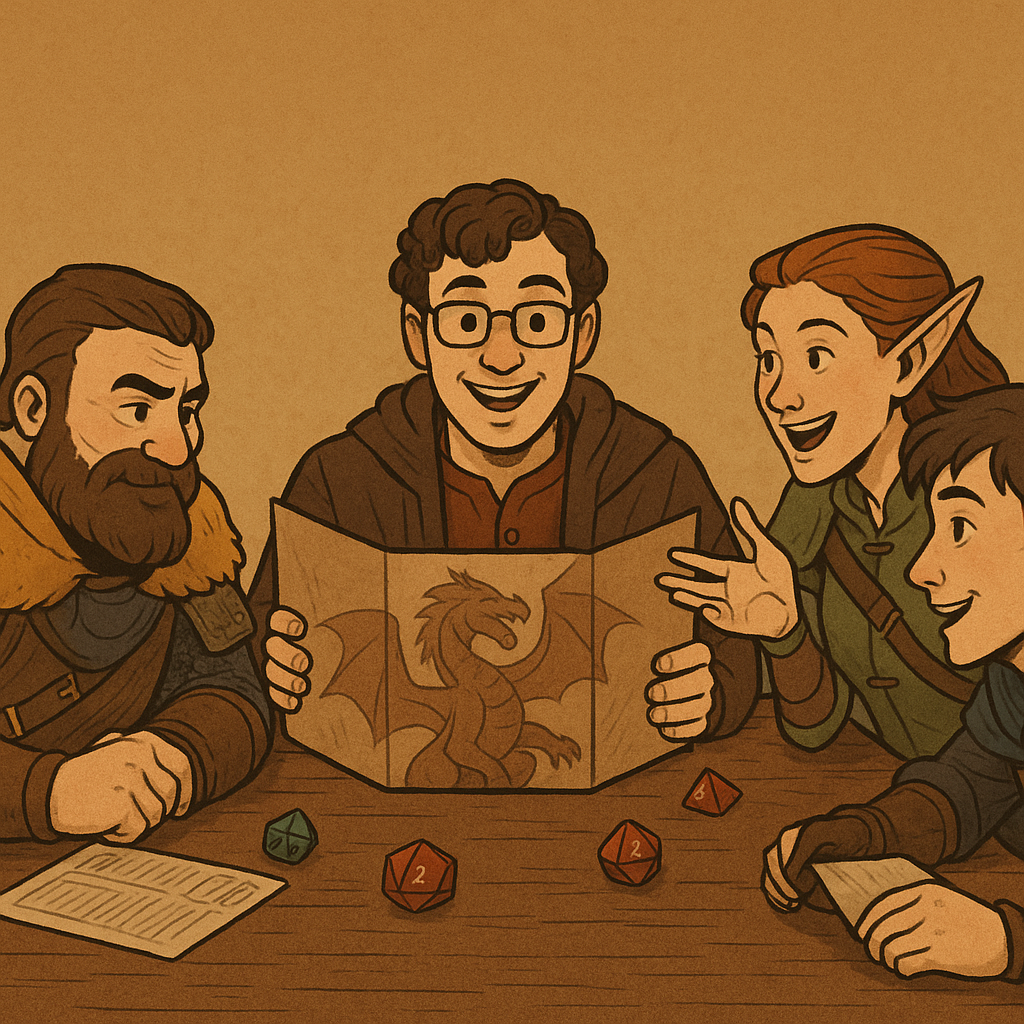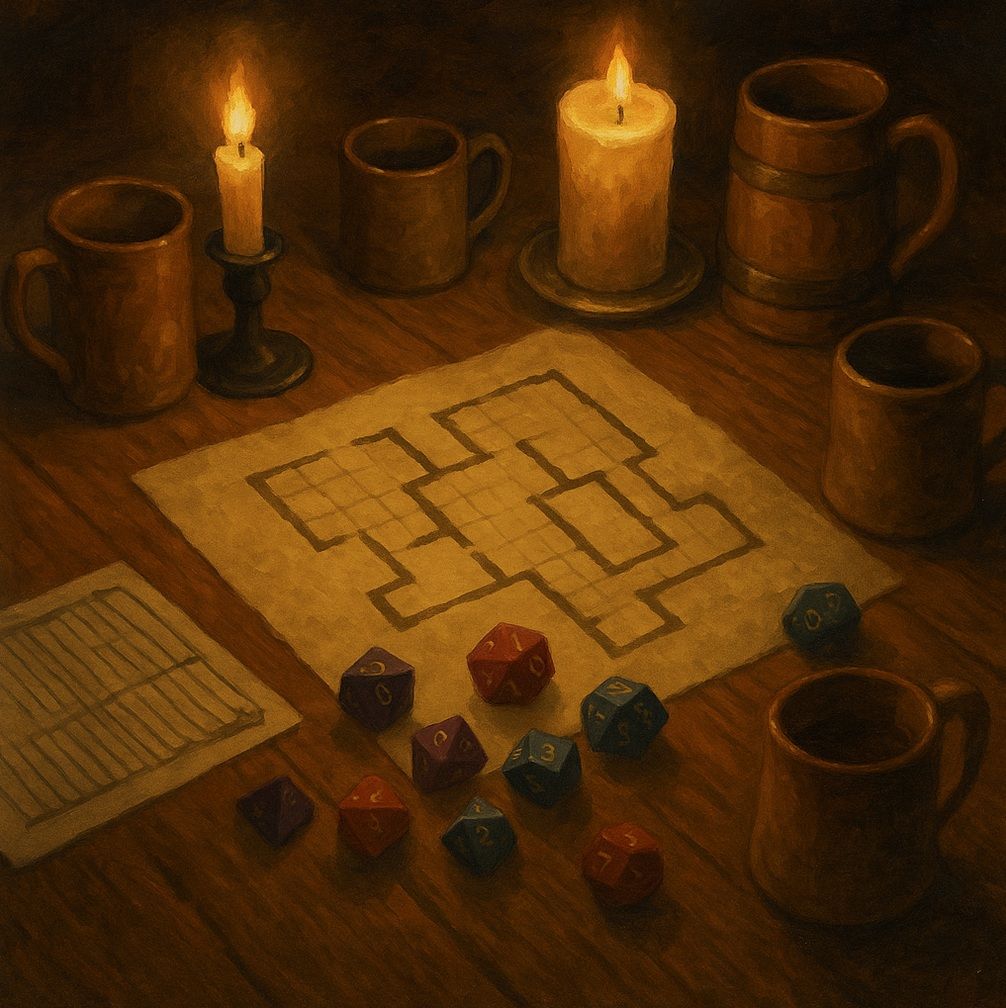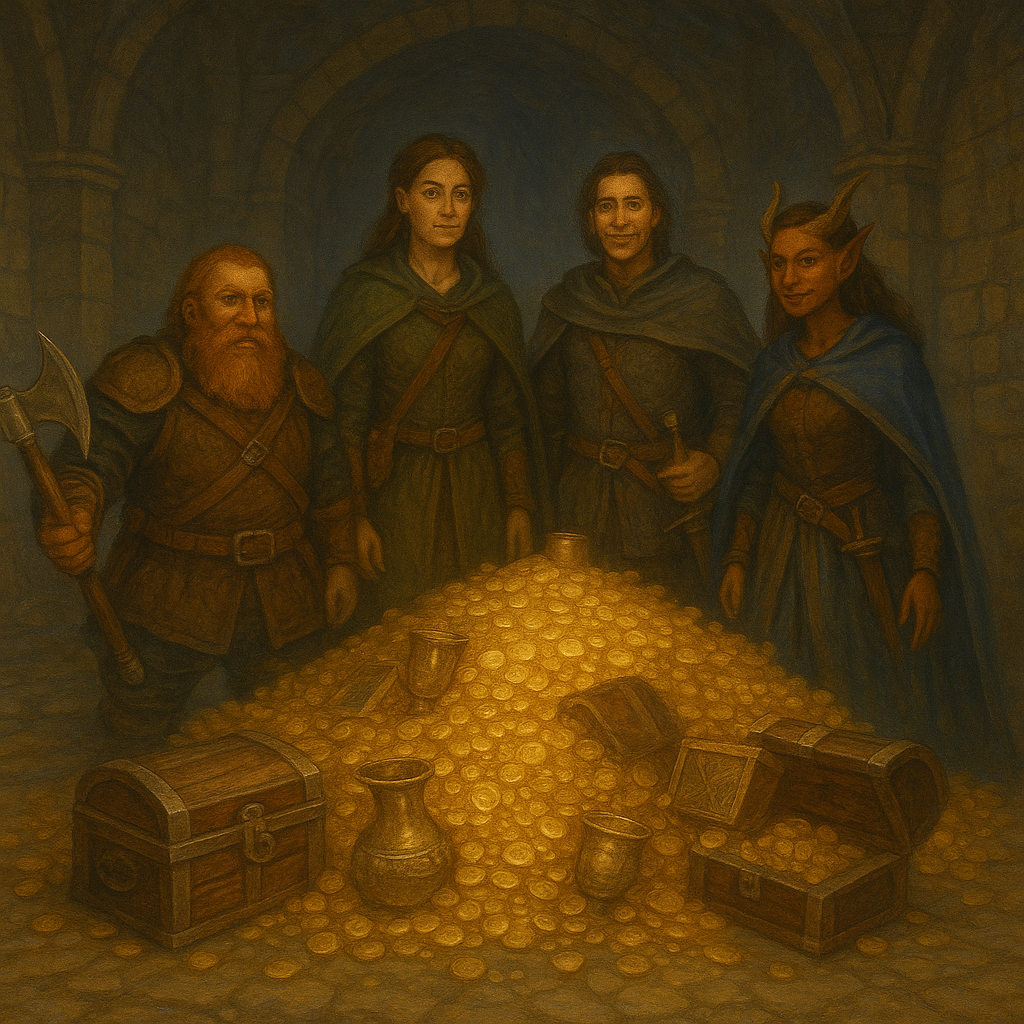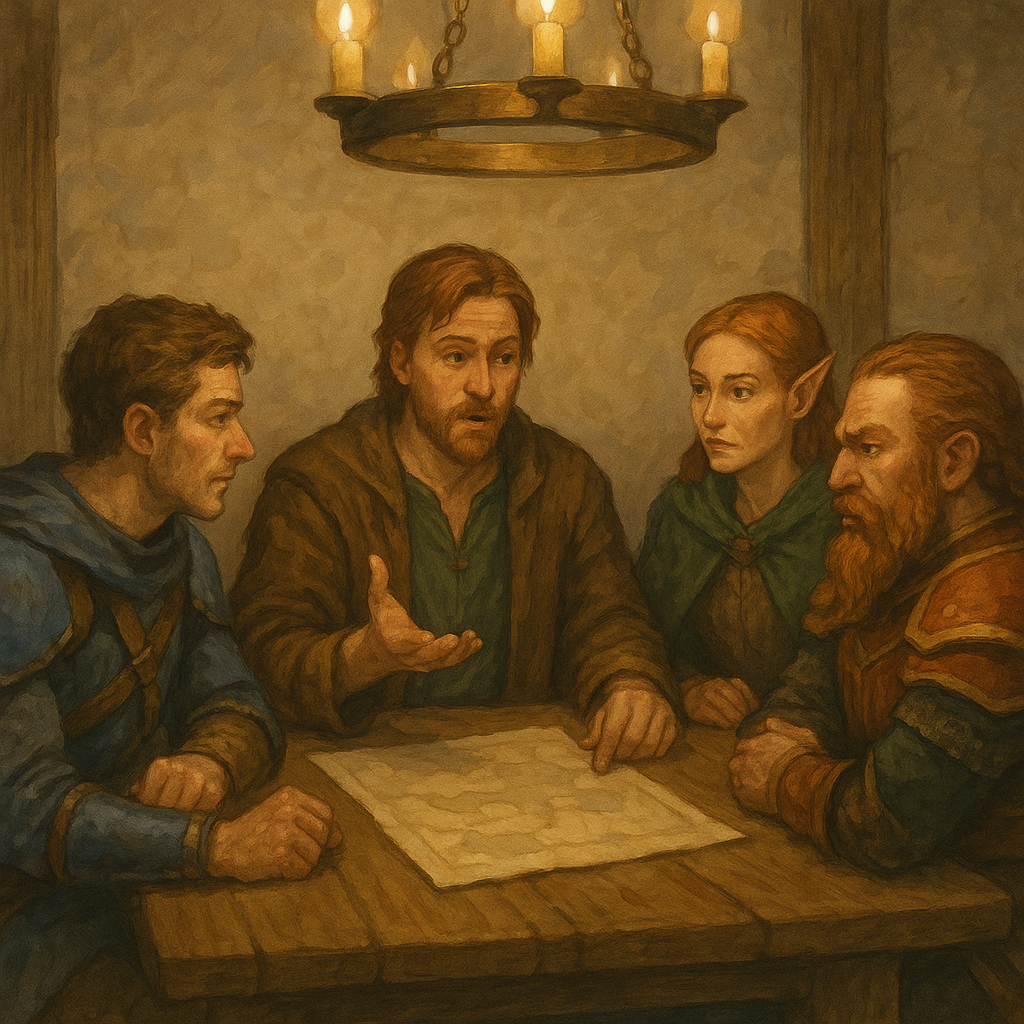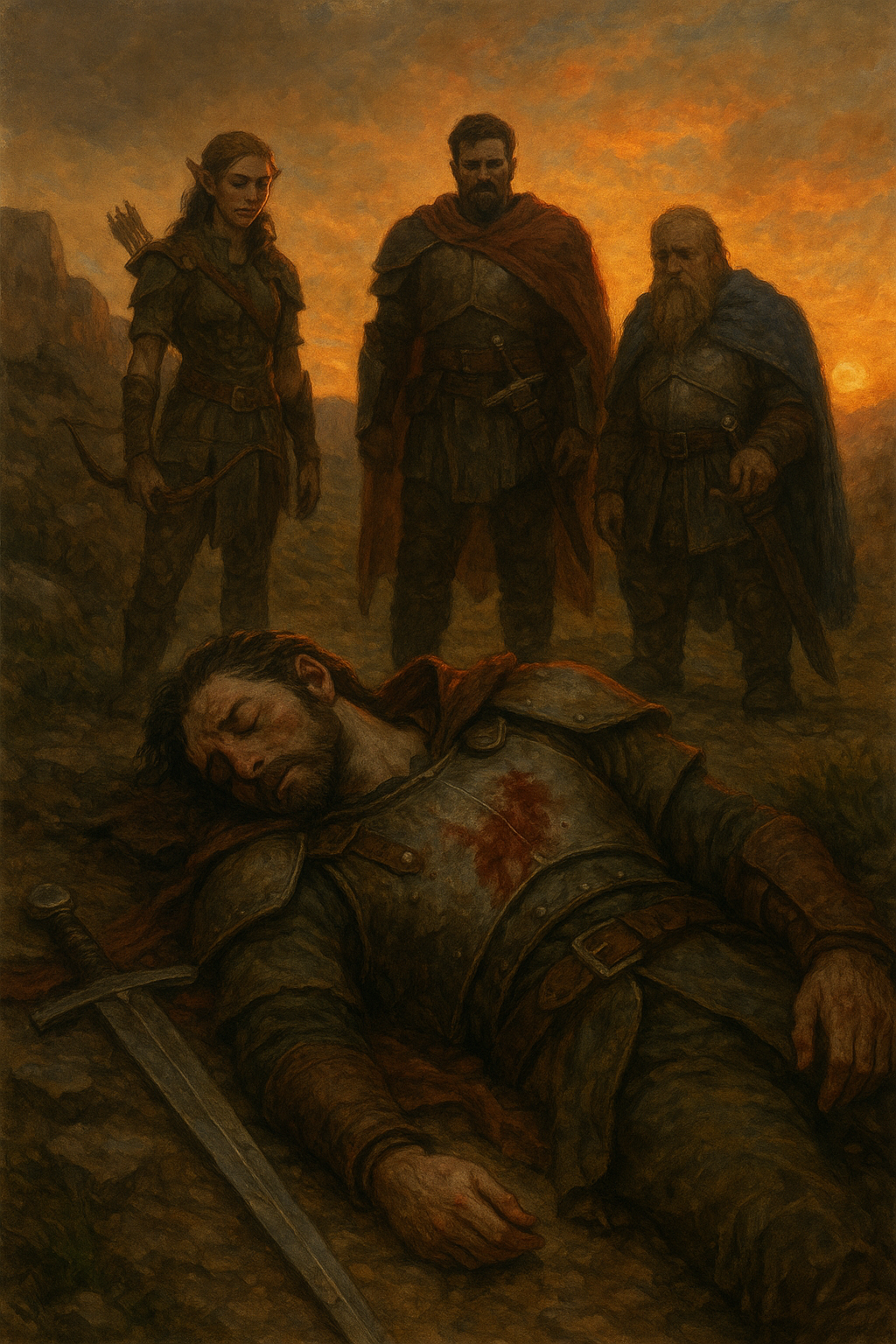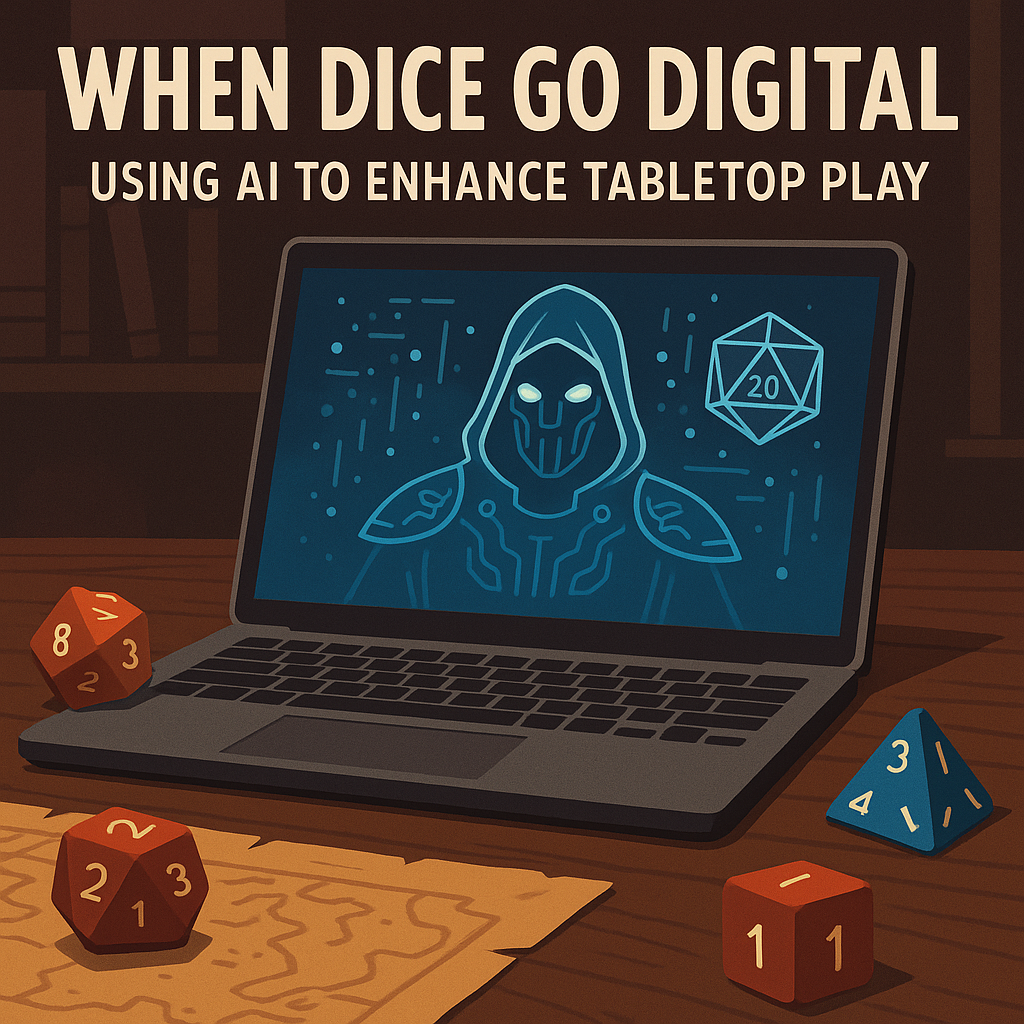Learning from Mistakes: Common DM Pitfalls and How to Avoid Them

Dear Readers, this post is going to be a long one, as it addresses an issue many DMs struggle with: making mistakes. I hope this post helps you avoid some common ones!
Dear Readers, welcome back to our Dungeons & Dragons (D&D) blog! Today, we’re addressing an important aspect of the Dungeon Master (DM) role: learning from mistakes. Every DM, whether a novice or a veteran, encounters pitfalls that can affect the enjoyment and flow of their campaign. Recognizing and avoiding these common mistakes is crucial for creating a memorable and engaging experience for your players. In this comprehensive post, we’ll explore some of the most common DM pitfalls, discuss their impact, and provide practical strategies for avoiding them. Let’s embark on this journey of improvement and mastery, turning potential pitfalls into opportunities for growth.
The Role of the DM
Before diving into the common pitfalls, let’s briefly revisit the role of the DM. The DM is the storyteller, referee, and world-builder of the game. They create the setting, plot, and challenges, guiding the players through their adventures. The DM’s responsibilities include:
- Designing and running adventures
- Portraying non-player characters (NPCs)
- Managing the rules and mechanics
- Creating a balanced and fun experience for the players
Given these multifaceted roles, it’s natural for DMs to encounter challenges and make mistakes. However, recognizing these pitfalls and learning how to avoid them can significantly enhance the gaming experience.
Common DM Pitfalls and How to Avoid Them
1. Over-Reliance on Railroading
Pitfall: Railroading occurs when the DM forces the players down a specific path or storyline, limiting their choices and agency. This can make players feel like their decisions don’t matter and can stifle creativity and engagement.
Impact:
- Reduces player agency and creativity
- Leads to player frustration and disengagement
- Creates a linear and predictable game experience
How to Avoid:
- Offer Meaningful Choices: Design scenarios where players have multiple options, each leading to different outcomes. Ensure their choices impact the story and world.
- Be Flexible: Be prepared to adapt the storyline based on player decisions. Embrace the unexpected and incorporate player actions into the narrative.
- Encourage Player Input: Involve players in world-building and decision-making. Ask for their ideas and preferences, and integrate them into the campaign.
Example: Instead of forcing players to follow a specific path to defeat a villain, provide multiple leads and allow them to choose their approach. They might decide to gather allies, seek a powerful artifact, or negotiate with the villain. Each choice should have meaningful consequences and affect the story’s outcome.
2. Overwhelming Players with Information
Pitfall: Bombarding players with excessive information, such as long exposition dumps or overly detailed descriptions, can overwhelm them and detract from the game’s pace and enjoyment.
Impact:
- Overwhelms and confuses players
- Slows down the game’s pace
- Reduces engagement and retention of important details
How to Avoid:
- Use Concise Descriptions: Provide essential information clearly and concisely. Focus on key details that enhance the scene and avoid unnecessary elaboration.
- Break Up Information: Distribute information gradually and contextually throughout the game. Use dialogue, environmental clues, and player discoveries to reveal details.
- Engage the Senses: Use sensory descriptions (sight, sound, smell, touch, taste) to create vivid scenes without lengthy exposition. This makes the setting more immersive and memorable.
Example: Instead of delivering a long monologue about the history of a city, introduce key details through interactions with NPCs, inscriptions on monuments, or the layout and architecture of the city. This approach keeps players engaged and allows them to piece together the information organically.
3. Ignoring Player Backstories and Motivations
Pitfall: Neglecting player backstories and motivations can make characters feel disconnected from the world and the story. This oversight can diminish player investment and role-playing opportunities.
Impact:
- Reduces player engagement and investment
- Misses opportunities for character development
- Creates a generic and impersonal experience
How to Avoid:
- Incorporate Backstories: Integrate elements of player backstories into the main plot and side quests. Create opportunities for characters to confront their past and pursue personal goals.
- Highlight Motivations: Understand each character’s motivations and design encounters that align with or challenge their goals and values.
- Personalize NPC Interactions: Tailor NPC interactions to reflect the characters’ backgrounds and relationships. This makes the world feel more responsive and immersive.
Example: If a player’s character has a vendetta against a particular villain, incorporate that villain into the campaign’s main plot or as a recurring antagonist. Design encounters that allow the character to pursue their vendetta while also contributing to the group’s goals.
4. Overcomplicating the Game with Rules
Pitfall: Overcomplicating the game by strictly adhering to every rule or introducing too many house rules can bog down the game and frustrate players. It’s important to balance rules enforcement with the flow and fun of the game.
Impact:
- Slows down gameplay and disrupts pacing
- Confuses and frustrates players
- Reduces the overall enjoyment of the game
How to Avoid:
- Prioritize Rule Simplicity: Focus on the core rules and keep additional rules to a minimum. Use rules that enhance gameplay and avoid unnecessary complexity.
- Be Flexible with Rules: Be willing to bend or simplify rules to maintain the game’s flow and fun. Prioritize storytelling and player enjoyment over strict rule adherence.
- Clarify House Rules: If you use house rules, clearly explain them to the players before the game starts. Ensure they understand and agree to the rules to avoid confusion.
Example: Instead of interrupting the game to look up obscure rules, make a quick judgment call and keep the game moving. You can review the rule after the session and adjust future rulings if needed.
5. Poor Encounter Balance
Pitfall: Designing encounters that are too easy or too difficult can lead to boredom or frustration. Ensuring that encounters are balanced and provide a suitable challenge is crucial for player enjoyment.
Impact:
- Boring or unengaging encounters if too easy
- Frustration and potential character deaths if too difficult
- Disrupts the overall pacing and excitement of the game
How to Avoid:
- Gauge Player Abilities: Understand the capabilities and strengths of the player characters. Design encounters that challenge them without overwhelming them.
- Adjust Difficulty On the Fly: Be prepared to adjust encounter difficulty during the game. Add or remove enemies, modify their tactics, or introduce environmental factors to balance the encounter.
- Vary Encounter Types: Include a mix of combat, social, and exploration encounters. This keeps the game dynamic and caters to different player preferences.
Example: If a combat encounter is proving too difficult, you could have reinforcements for the players arrive, or introduce environmental hazards that also affect the enemies, evening the odds.
6. Neglecting Role-Playing Opportunities
Pitfall: Focusing too much on combat and mechanics while neglecting role-playing opportunities can reduce player engagement and character development. D&D is as much about storytelling and character interaction as it is about combat.
Impact:
- Limits character development and growth
- Reduces player engagement and immersion
- Creates a one-dimensional gameplay experience
How to Avoid:
- Encourage Role-Playing: Create scenarios that encourage characters to interact, make decisions, and express their personalities. Reward role-playing with inspiration, in-game benefits, or narrative rewards.
- Develop Rich NPCs: Design NPCs with distinct personalities, goals, and backgrounds. Use them to create meaningful interactions and conflicts that drive the story forward.
- Integrate Role-Playing with Mechanics: Blend role-playing with mechanics by including skill challenges, social encounters, and puzzles that require creative thinking and character abilities.
Example: Include a diplomatic mission where players must negotiate with a rival faction. Success depends on their ability to persuade, deceive, or intimidate NPCs, using both their role-playing skills and character abilities.
7. Lack of Preparation
Pitfall: Failing to adequately prepare for a session can lead to disorganized gameplay, slow pacing, and missed opportunities for engagement. While improvisation is an important skill, a lack of preparation can hinder the game’s flow.
Impact:
- Leads to disorganized and chaotic gameplay
- Slows down pacing and reduces player engagement
- Misses opportunities for meaningful interactions and plot development
How to Avoid:
- Create Session Outlines: Prepare a session outline with key scenes, encounters, and objectives. This provides a roadmap for the session and helps maintain focus.
- Anticipate Player Actions: Consider potential player actions and plan for different scenarios. Prepare multiple paths and outcomes to accommodate their decisions.
- Organize Materials: Have your notes, maps, NPC information, and reference materials organized and easily accessible. This minimizes downtime and keeps the game running smoothly.
Example: Before a session, prepare an outline that includes key plot points, encounters, and NPC interactions. Have maps and tokens ready, and familiarize yourself with the rules and mechanics relevant to the session.
8. Inconsistent Game World
Pitfall: An inconsistent game world with contradictory details, unclear lore, or changing rules can confuse players and break immersion. Consistency is key to creating a believable and immersive world.
Impact:
- Confuses and frustrates players
- Breaks immersion and engagement
- Undermines the believability of the game world
How to Avoid:
- Create a World Bible: Maintain a document with key details about your game world, including geography, history, cultures, and important NPCs. Refer to this document to ensure consistency.
- Keep Track of Events: Record major events, player actions, and changes in the world. Use these notes to maintain continuity and build on previous sessions.
- Clarify Rules and Lore: Clearly define the rules and lore of your world. Communicate these to your players and ensure they are consistently applied.
Example: Create a world bible that includes maps, timelines, and descriptions of major locations and NPCs. Use this document to maintain consistency and refer to it during sessions to ensure details align with established lore.
9. Neglecting Player Feedback
Pitfall: Ignoring player feedback or failing to address their concerns can lead to dissatisfaction and disengagement. Player feedback is valuable for improving the game and ensuring everyone has a positive experience.
Impact:
- Leads to player frustration and dissatisfaction
- Misses opportunities for improvement
- Reduces overall enjoyment and engagement
How to Avoid:
- Solicit Feedback Regularly: Regularly ask for player feedback, both during and between sessions. Encourage open and honest communication.
- Act on Feedback: Take player feedback seriously and make necessary adjustments to improve the game. Address concerns and show that you value their input.
- Foster a Positive Environment: Create a positive and supportive environment where players feel comfortable sharing their thoughts and ideas.
Example: At the end of each session, ask players for feedback on what they enjoyed and what could be improved. Use this feedback to make adjustments and enhance future sessions.
10. Over-Emphasis on DM Control
Pitfall: While the DM has a central role in guiding the game, over-emphasizing DM control can stifle player creativity and agency. It’s important to strike a balance between guiding the story and allowing players to shape their own destinies.
Impact:
- Stifles player creativity and agency
- Reduces player engagement and investment
- Creates a one-sided and authoritarian game experience
How to Avoid:
- Share Narrative Control: Allow players to contribute to the narrative and world-building. Encourage them to create backstories, develop NPC relationships, and introduce plot elements.
- Embrace Improvisation: Be open to improvisation and adapt the story based on player actions. Embrace the unexpected and incorporate their ideas into the narrative.
- Empower Player Decisions: Respect player decisions and let them shape the story. Avoid overriding their choices or forcing predetermined outcomes.
Example: During a session, a player comes up with a creative solution to a problem that you hadn’t anticipated. Instead of dismissing it, embrace the idea and adjust the story to incorporate their solution, rewarding their creativity and agency.
Case Studies: Learning from Mistakes
To illustrate how these pitfalls can manifest and how to avoid them, let’s explore some case studies based on real or hypothetical scenarios.
Case Study 1: The Railroaded Campaign
Scenario: DM Alex plans an epic campaign where the players must thwart a dark cult’s plan to summon a demon. However, Alex has a specific storyline in mind and frequently forces players down a predetermined path, ignoring their attempts to explore other options or pursue side quests.
Pitfalls Encountered:
- Over-Reliance on Railroading
- Neglecting Player Agency
Impact: Players feel frustrated and disengaged, as their choices seem irrelevant and the story feels predetermined. The campaign lacks spontaneity and player creativity.
Solution: Alex decides to offer more meaningful choices and be flexible with the storyline. During the next session, Alex presents multiple leads and allows players to choose their approach. When players decide to investigate a mysterious ruin instead of following the main plot, Alex improvises and ties the ruin to the cult’s activities, integrating their choice into the story.
Case Study 2: The Information Dump
Scenario: DM Jamie loves world-building and creates a rich, detailed setting for their campaign. However, during sessions, Jamie often overwhelms players with long exposition dumps about the history, politics, and cultures of the world.
Pitfalls Encountered:
- Overwhelming Players with Information
- Slowing Down the Game’s Pace
Impact: Players feel overwhelmed and have difficulty retaining important details. The game’s pacing suffers, and engagement wanes during lengthy expositions.
Solution: Jamie decides to break up the information into smaller, more digestible pieces and reveal it contextually. During the next session, Jamie introduces key details through NPC interactions, environmental descriptions, and player discoveries. For example, players learn about a city’s history through conversations with locals and inscriptions on ancient monuments.
Case Study 3: The Ignored Backstory
Scenario: DM Taylor has a diverse group of characters, each with rich backstories and personal motivations. However, Taylor focuses solely on the main plot and neglects the characters’ personal stories, resulting in a disconnected and impersonal campaign.
Pitfalls Encountered:
- Ignoring Player Backstories and Motivations
- Reducing Player Engagement
Impact: Players feel their characters’ backstories and motivations are irrelevant, leading to reduced investment and engagement. The campaign lacks depth and personal connections.
Solution: Taylor decides to incorporate elements of the characters’ backstories into the main plot and side quests. During the next session, Taylor introduces a subplot where one character’s estranged sibling seeks their help. This subplot intertwines with the main plot, providing personal stakes and character development.
Strategies for Continuous Improvement
Improving as a DM is an ongoing process that involves self-reflection, learning from mistakes, and adapting to feedback. Here are some strategies for continuous improvement:
1. Reflect on Each Session
Take time after each session to reflect on what went well and what could be improved. Consider player feedback, your observations, and any challenges encountered.
Example: After a session, make notes on key moments, player reactions, and any issues that arose. Use these notes to identify areas for improvement and plan for future sessions.
2. Learn from Others
Learn from other DMs by reading blogs, watching videos, and participating in forums and communities. Gain insights and tips from their experiences and perspectives.
Example: Join online D&D communities, attend workshops or conventions, and engage with other DMs to exchange ideas and learn new techniques.
3. Experiment with New Techniques
Experiment with new storytelling techniques, encounter designs, and game mechanics. Be open to trying new approaches and seeing what works best for your group.
Example: Introduce a new type of encounter, such as a puzzle or social challenge, and observe how players respond. Adjust your approach based on their feedback and engagement.
4. Stay Flexible and Adaptable
Stay flexible and adaptable, both in your planning and during sessions. Embrace improvisation and be willing to adjust your plans based on player actions and feedback.
Example: If players take the story in an unexpected direction, adapt your plans and incorporate their ideas into the narrative. Flexibility ensures the game remains dynamic and engaging.
Conclusion
Learning from mistakes is an essential part of becoming a better DM. By recognizing common pitfalls, understanding their impact, and implementing practical strategies to avoid them, you can create a more engaging, immersive, and enjoyable experience for your players.
Remember to offer meaningful choices, provide concise and contextual information, incorporate player backstories and motivations, balance encounters, encourage role-playing, prepare adequately, maintain consistency, seek player feedback, and share narrative control. Embrace continuous improvement by reflecting on sessions, learning from others, experimenting with new techniques, and staying flexible.
Until next time, Dear Readers…















